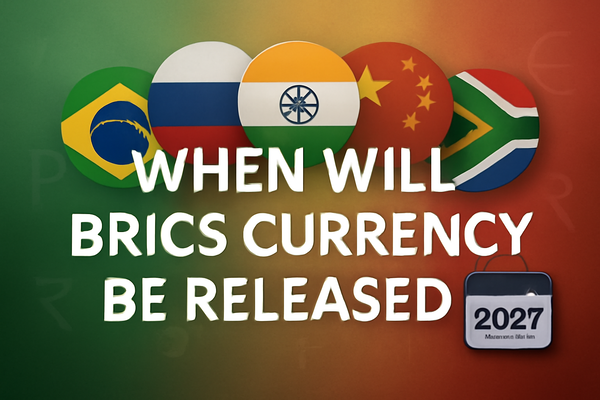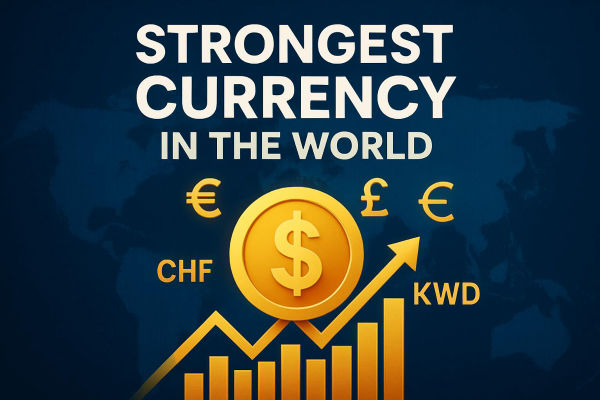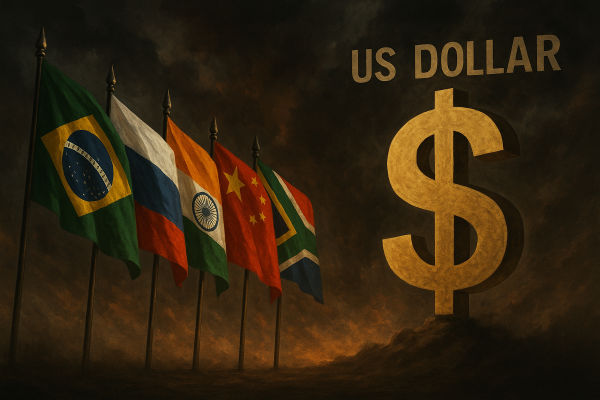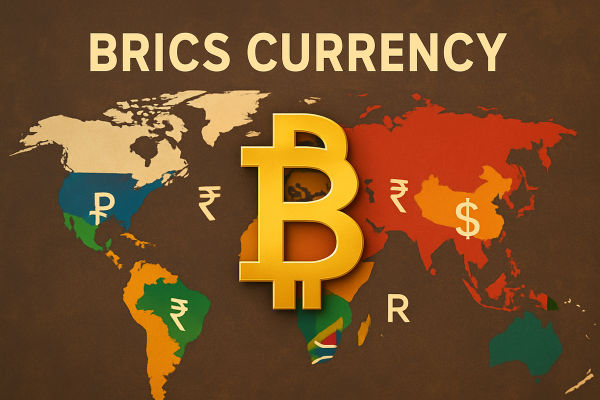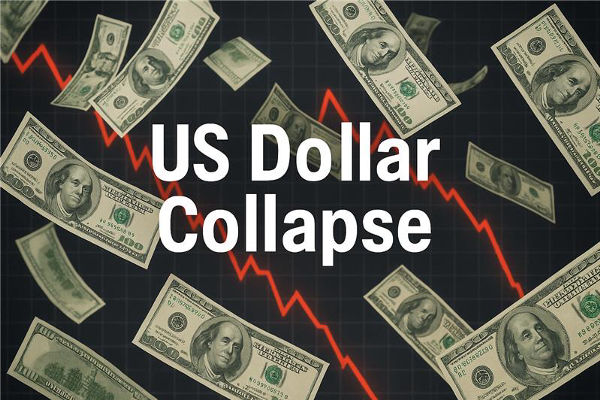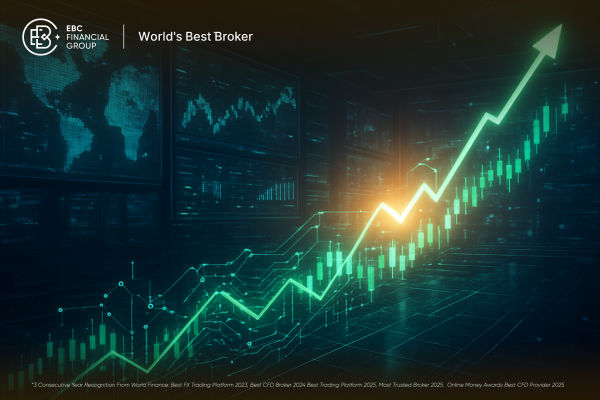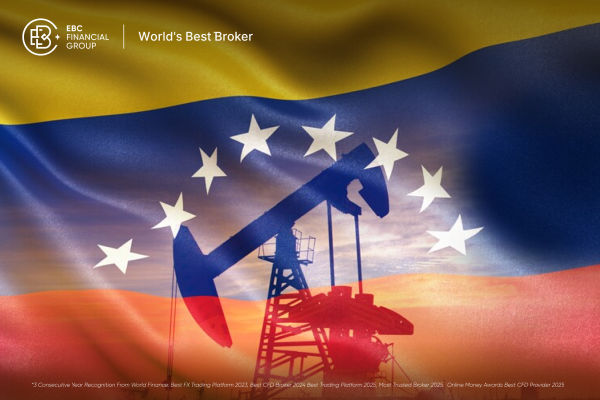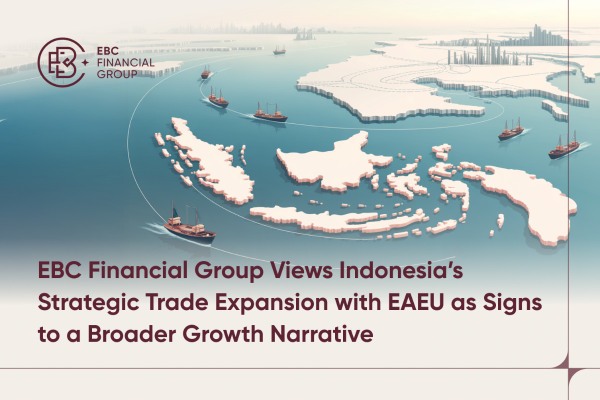At the July 2025 BRICS Summit in Rio, leaders confirmed that no joint currency would be launched in the near term. Instead, they prioritized expanding local-currency trade and developing BRICS Pay, a cross-border payment platform.
Experts suggest any euro-style BRICS currency is at least a decade away, given the need for political alignment, fiscal stability, and central bank cooperation. Traders should watch for incremental steps, such as swap-line agreements, CBDC pilots, and settlement in yuan and rupees, as the real “first phase” of BRICS monetary integration.
Below is an up-to-date assessment of the project, why delays persist, and what traders should watch next.
July 2025 Summit Overview

The 17th BRICS summit, hosted by Brazil on 6–7 July 2025, drew intense speculation that a launch date might finally emerge. Instead, leaders delivered a familiar message: closer monetary co-operation, yes; a single currency, not yet.
Key outcomes:
-
No unified BRICS currency was announced.
-
Leaders pledged to “continue technical discussions” on payments.
-
BRICS Pay—a shared cross-border payment platform, remains “under development”, with Brazil taking responsibility for the next phase.
-
India stressed the bloc is “not conspiring to undermine the dollar”, easing some geopolitical tension.
Russian officials confirmed progress on settling trade in local currencies rather than US dollars.
Bloomberg captured the mood with a telling headline on 6 July: “The decade-old local-currency push by BRICS is still a pipe dream.”
Membership Changes: BRICS Expands to 11 Members
Indonesia formally joined the group on 6 January 2025, and Saudi Arabia completed its accession in mid-2025, bringing total full membership to eleven :
Brazil, Russia, India, China, South Africa, Egypt, Ethiopia, Indonesia, Iran, Saudi Arabia, and the UAE.
New "Partner Country" Tier Created
At the January 2025 expansion, BRICS also established a second tier of 10 partner countries that participate in summits and working groups but lack full voting rights :
Belarus, Bolivia, Cuba, Kazakhstan, Malaysia, Nigeria, Thailand, Uganda, Uzbekistan and Vietnam.
This two-tier structure allows broader engagement while preserving decision-making authority among core members. Over 30 additional nations have expressed interest in joining, signalling BRICS' growing appeal as a counterweight to Western-dominated institutions.
Impact on Currency Prospects
The larger bloc strengthens collective trade heft—the BRICS-11 now represents approximately 46% of the global population and over 36% of global GDP at purchasing-power parity. However, expansion adds even more complexity to any monetary union.
GDP sizes now range from China's $18 trillion economy to Ethiopia's $156 billion, while inflation rates and fiscal regimes vary even more widely than before, further complicating the already distant prospect of currency convergence.
Local-Currency Trade: Progress and Regional Variations
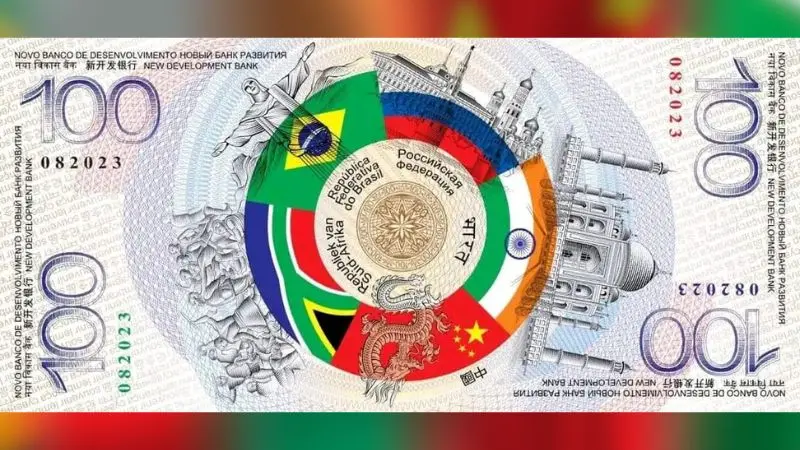
While a single currency remains distant, intra-BRICS trade is increasingly dollar-free. According to data released at the July summit, about 90% of commerce among BRICS nations is now settled in local currencies, up from roughly 65% two years ago. This sharp jump reflects:
Energy deals are priced in yuan or roubles, with China-Russia bilateral trade reaching a record $245 billion in 2024.
Indian rupee-denominated trade corridors with Russia and the UAE expanding.
A surge in bilateral swap lines that bypass SWIFT.
The yuan's share of global forex trades rising to 8.5% by September 2025, up from 7% in 2022.
However, the 90% figure largely reflects Russia's reported share and stronger yuan-ruble corridors; not every BRICS bilateral pair has reached this level. Independent metrics vary by corridor, but the trend toward local settlement is clear and accelerating.
For traders, the shift creates new liquidity pockets in EMFX pairs and reduces outright USD demand in certain commodity invoices. Notably, the ruble appreciated 45% against the dollar and 25% against the yuan through 2025, an unexpected development driven partly by capital controls and energy-export strength.
BRICS Pay: Timeline Extended to 2030
First proposed in 2019, BRICS Pay aims to link national fast-payment networks and eventually support CBDC transfers. Contrary to earlier rumours, the platform is not live.
While Russian Foreign Minister Sergey Lavrov said in Rio that a pilot could appear "before the end of 2026", Russian Deputy Foreign Minister Sergey Ryabkov clarified in October 2025 that the system is now targeted for operational status by 2030.
Technical Architecture Confirmed
The platform will be blockchain-based and decentralised, designed to link existing national systems, including Russia's SPFS, China's CIPS, India's UPI, and Brazil's Pix.
It will also integrate central bank digital currencies (CBDCs) from member states, including the digital yuan and digital ruble.
Regional Readiness
South American nations have confirmed they are "ready to accept the BRICS payment system" once operational, signalling broader regional interest beyond core members.
However, technical integration, compliance frameworks, and achieving consensus among 11 diverse economies continue to slow progress. Until then, expect only incremental testing and bilateral pilots. [1]
Obstacles to a Unified Currency
1. Economic Divergence
The BRICS-11 now span everything from China's $18 trillion economy to Ethiopia's $156 billion output. Saudi Arabia's addition (GDP of approximately $1.1 trillion) helps bridge the gap but doesn't resolve fundamental differences. Inflation ranges from low single digits in the UAE and Saudi Arabia to double digits in Egypt and Argentina (a partner country).
Aligning monetary policy under one roof would require unprecedented fiscal coordination and a supranational central bank—neither exists, and India has repeatedly stated it is not seeking to replace the dollar.
2. Political Sovereignty
Ceding control of interest rates and money supply is politically sensitive, especially for India, Brazil and South Africa, which have deep domestic capital markets and floating currencies.
Beijing's yuan internationalisation agenda also competes with the idea of a brand-new unit. With India set to host the 2026 BRICS summit, analysts expect further emphasis on local-currency trade over monetary union.
3. Legal and Technical Hurdles
Capital-control regimes differ sharply across members and the 10 partner countries
No shared deposit-insurance or banking-resolution framework is in place
FX-clearing infrastructure would need to handle eleven full members, plus ten partner jurisdictions, and multiple script systems
Blockchain integration and CBDC interoperability remain in pilot stages, with no unified standard
The expansion to partner countries adds another layer of complexity, as any future currency arrangement must decide whether these nations would be included or create a two-tier monetary system.
When Will BRICS Currency Be Released? Expert Forecast
| Timeframe |
What’s Plausible |
Likelihood* |
| 2025–2027 |
BRICS Pay pilot; more trade in local currencies; CBDC interoperability tests |
High |
| 2028–2030 |
Settlement “unit of account” (similar to IMF’s SDR) but not a true currency |
Moderate |
| Post-2030 |
Discussion of a unified digital currency, contingent on economic alignment |
Low |
Geopolitical Ripple: Tariff Threats from Washington
The summit spurred a swift response from the United States. President Trump warned of an additional 10% tariff on countries “aligning with anti-American policies of BRICS”.
While largely rhetorical at this stage, the threat adds an extra layer of uncertainty for exporters within the bloc and could stoke EMFX volatility.
Trading Implications
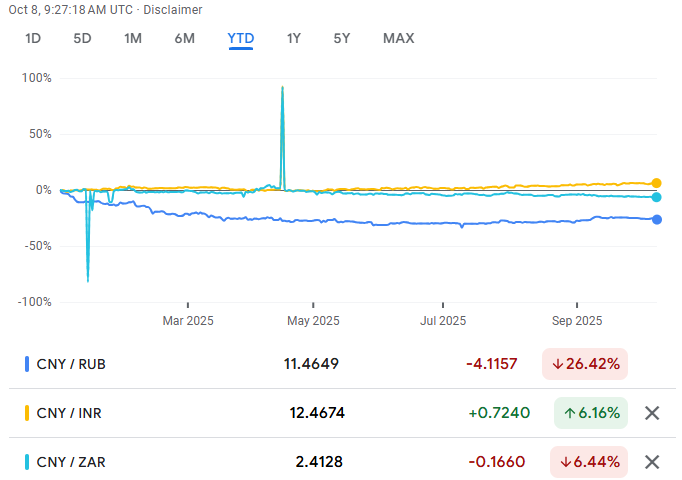
1. Currency Pairs to Watch
-
CNY/RUB, INR/CNY and ZAR/CNY volumes continue to rise, with the yuan-ruble pair hitting 33 trillion rubles ($420 billion) in 2024 trade volume. The ruble's unexpected 45% appreciation against the dollar and 25% gain versus the yuan in 2025 created profitable positioning opportunities for those tracking Russian capital controls and energy flows.
-
USD/BRL and USD/ZAR may see episodic weakness as local-currency settlement grows. However, Trump's 10% tariff threats announced in July 2025 have added volatility to these pairs, requiring wider stop-loss buffers. [2]
-
Synthetic baskets: Desks now quote a "BRICS-11 index" (equal-weighted) versus USD for hedging, updated to include Saudi Arabia. Some brokers also track a broader "BRICS+Partners" basket covering all 21 nations.
Yuan gains ground: The yuan's share of global forex trades climbed to 8.5% by September 2025, reinforcing its role as the primary BRICS settlement currency and creating deeper liquidity in CNY crosses.
2. Rates and Bonds
Local-currency bond issuance by BRICS development banks is likely to expand, offering relative-value opportunities against US Treasuries. Watch yield-spread compression in yuan- and rupee-denominated green bonds.
New dynamic: The ruble's strength has compressed Russian local-currency yields, creating carry-trade opportunities for those able to navigate sanctions and capital-control complexity.
3. Commodities
Russian oil sold in yuan or roubles changes quoting conventions for Urals, with China-Russia energy trade in 2024 reaching record levels as part of the $245 billion bilateral total.
Gold hubs in Dubai and Shanghai are exploring BRICS Pay settlement pilots, potentially shifting LBMA liquidity eastward. With the payment system now targeted for 2030 operational status, precious metals traders should monitor incremental pilot announcements from the UAE and Chinese clearing houses.
4. Equity Themes
Payment-system providers, regional clearing houses and AI-driven FX-matching engines may benefit as cross-border flows in non-dollar pairs scale up. The confirmed blockchain-based architecture of BRICS Pay favours fintech firms with distributed-ledger expertise.
Conversely, export-heavy firms in BRICS-11 face ongoing US tariff risk premia following Trump's July 2025 announcement of 10% tariffs on nations "aligning with anti-American policies of BRICS". Monitor trade-compliance updates, as specific enforcement mechanisms remain fluid.
Partner-country plays: With 10 new partner nations—including Malaysia, Thailand, Vietnam, and Nigeria—investors may find value in frontier-market ETFs and regional supply-chain proxies positioned to benefit from BRICS infrastructure and trade corridors.
Risk Checklist for Traders
-
Headline Shock: Summit rumours can whipsaw EMFX quotes; keep tight stops during BRICS meetings. The next summit is scheduled for 2026 in India, where analysts expect continued emphasis on de-dollarisation rhetoric that can trigger short-term volatility even without concrete policy changes.
-
Liquidity Gaps: Some BRICS cross-pairs remain thin; use limit orders and beware of weekend gaps. The ruble's 45% surge in 2025 caught many traders off-guard, demonstrating how capital controls and thin order books can produce extreme moves in peripheral pairs.
-
Geopolitical Escalation: Monitor tariff announcements or sanctions that could freeze payment-system progress. Trump's 10% tariff on BRICS nations announced in July 2025 has materialised as an ongoing compliance risk, though specific enforcement remains inconsistent. Track the Trump 2.0 tariff tracker for real-time updates on implementation.
-
Regulatory Shifts: CBDC frameworks evolve quickly—check local capital-control changes weekly. With BRICS Pay now targeting 2030 instead of 2026, regulatory timelines have shifted, but individual member states continue piloting CBDCs at different speeds.
-
Data Quality: Macro statistics from smaller BRICS members can be revised heavily; build buffers into models. This risk has increased with 10 partner countries (Belarus, Bolivia, Cuba, Kazakhstan, Malaysia, Nigeria, Thailand, Uganda, Uzbekistan, Vietnam) now participating in working groups, where data transparency varies widely.
Membership Uncertainty: With over 30 nations expressing interest in joining BRICS and the new partner-country tier creating ambiguity around decision-making authority, watch for surprise expansion announcements that can shift regional FX dynamics.
Practical Strategies
-
Event-Driven Volatility Trades: Straddles around future BRICS summits or NDB announcements remain viable. The 2026 India summit will be a key test of whether the bloc can maintain unity as it expands, creating setup opportunities in INR, CNY, and BRL several weeks ahead.
-
Carry-and-Roll: Short-tenor swaps exploiting higher local rates in India and Brazil versus low-yield currencies. The ruble's unexpected strength has also created compressed-yield carry opportunities for those able to navigate Russian capital controls.
-
Relative-Value Bonds: Long on NDB real-denominated issuance hedged with US dollar bonds of similar duration. Consider adding Saudi riyal and UAE dirham bond exposure now that both Gulf states are full BRICS members.
Thematic Equity Baskets: Payment-rail developers, emerging-market infra plays and regional commodity exchanges. Focus on firms with blockchain and distributed-ledger expertise, given BRICS Pay's confirmed technical architecture. Also consider frontier-market funds tracking the 10 partner countries, particularly Malaysia, Thailand, and Vietnam, which offer liquid exposure to BRICS trade corridor growth. [3]
FAQs About BRICS Currency:
When will the BRICS currency actually be released?
No unified BRICS currency will be released in the near term. At the October 2025 update, BRICS Pay (the payment platform) has been pushed to a 2030 operational target, and any euro-style currency union remains at least a decade away.
The most realistic timeline shows BRICS Pay pilots in 2025-2027, a possible settlement "unit of account" (similar to IMF's SDR) by 2028-2030, and discussions of a unified digital currency only post-2030, contingent on economic alignment among the now 11 full members plus 10 partner countries.
How can I invest in or trade BRICS currency developments?
Since no actual BRICS currency exists, traders should focus on the "process not the product." Monitor CNY/RUB, INR/CNY, and ZAR/CNY pairs, which saw significant volume increases in 2025.
Consider yuan internationalisation plays (yuan reached 8.5% of global forex trades by September 2025), local-currency bond issuance from BRICS development banks, and thematic equity baskets including payment-rail developers and blockchain firms positioned for the confirmed blockchain-based BRICS Pay architecture.
Hedge using BRICS-11 index funds and watch for volatility around the 2026 India summit.
Will BRICS currency replace the US dollar?
No, not in the foreseeable future. While 90% of intra-BRICS trade now settles in local currencies (up from 65% two years ago), this primarily reflects Russia-China energy deals and regional corridors rather than global dollar displacement.
The dollar still accounts for 58-60% of global reserves and maintains unmatched liquidity depth. BRICS currency initiatives are more likely to create a parallel system for member nations rather than challenge global dollar dominance.
The realistic impact is gradual: more regional trade bypassing dollars, alternative payment rails via BRICS Pay by 2030, and slow adjustments in reserve distributions rather than wholesale currency replacement.
Conclusion
So, when will a BRICS currency be released? The honest answer remains: not anytime soon. Three months after the July 2025 summit, the trajectory has become even clearer—and slower.
BRICS Pay, once expected to pilot by late 2026, is now targeted for operational status by 2030. Any euro-style currency union sits a decade or more beyond that.
Since July, the bloc has expanded to 11 full members (with Saudi Arabia's formal accession) plus 10 partner countries, strengthening its collective economic weight to 46% of the global population and 36% of GDP at purchasing-power parity.
Yet this very expansion—spanning Ethiopia's $156 billion economy to China's $18 trillion—makes monetary convergence more complex, not less.
Disclaimer: This material is for general information purposes only and is not intended as (and should not be considered to be) financial, investment or other advice on which reliance should be placed. No opinion given in the material constitutes a recommendation by EBC or the author that any particular investment, security, transaction or investment strategy is suitable for any specific person.
Sources
[1] https://www.bbc.com/news/articles/c1dnz7gw92zo
[2] https://watcher.guru/news/south-america-ready-to-accept-the-brics-payment-system
[3] https://moderndiplomacy.eu/2025/03/27/brics-game-changing-blockchain-payment-system-the-future-of-global-transactions/
